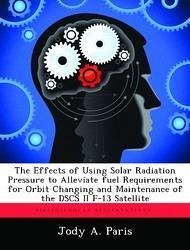Orbit disposal and maintenance of aging satellites has become a significant concern over the past few years, as the increasing number of orbiting objects in high-value orbits (e.g. geosynchronous) threatens to limit the launching of future satellites and spacecraft. Many of the satellites currently in orbit, however, were not built with disposal considerations. The DSCS II series, for example, was launched into orbit beginning in the 1970s, and many satellites are now without the fuel required to conventionally transition to a sanctioned disposal orbit. In geosynchronous orbit, however, the largest non-gravitational perturbation is solar radiation pressure (SRP). By adjusting the position of the satellite with a controller to maximize the perturbing acceleration due to the force of SRP, the satellite can be slowly raised into an appropriate disposal orbit. The results from this study, along with validation results propagated with Satellite Tool Kit, are presented. After making several simplifying assumptions (primarily a cylindrical Earth shadow, flat plate geometry, and constant cross-sectional area of the satellite), the time required to raise the modelled DSCS II F-13 satellite 400 km into a disposal orbit is approximately 33 years. This time-to-disposal can be reduced by using a larger area-to-mass ratio and more reflective surface materials.








